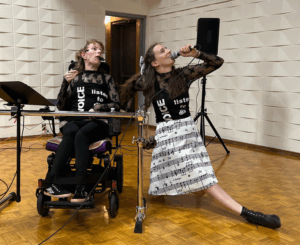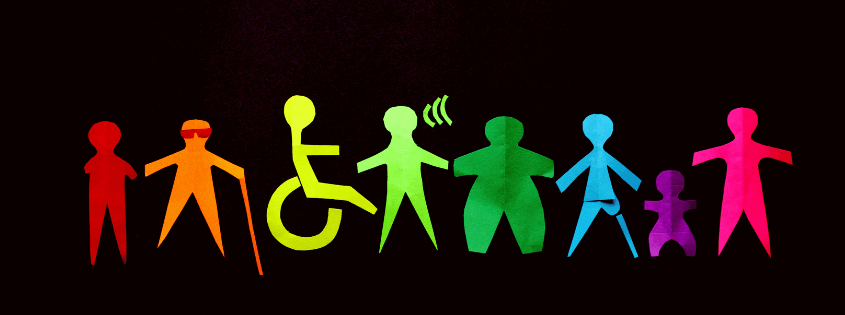Interrupting Ableism in the Arts Sector: Part 1
Recognizing Ableism in the Arts
This is the first of three articles in the series Interrupting Ableism by Deb Nyczai. This edition focuses on recognizing albeism in the arts.
This article is the first in a three-part series on interrupting ableism in the arts sector. In Part 1, we examine how ableism manifests in artistic spaces and the systemic barriers disabled artists face. Part 2 will explore the cost of exclusion—how inaccessibility limits artistic innovation, audience engagement, and economic growth. Part 3 will outline actionable steps for arts organizations, funders, and policymakers to create a more accessible and inclusive arts sector.
The arts have long been a space for creative expression, cultural reflection, and community-building. However, for disabled artists, the arts sector remains riddled with systemic barriers that make participation inequitable. While diversity and inclusion conversations have gained traction, ableism continues to be overlooked, perpetuating a cycle of exclusion.
To truly disrupt ableism in the arts, we must first recognize how it manifests—how it silences, marginalizes, and limits disabled artists and audiences.
The Invisibility of Disabled Artists
 One of the most pervasive forms of ableism in the arts is the assumption that disabled artists are rare or non-existent. The lack of representation of disabled artists in mainstream galleries, performance venues, and festivals creates the illusion that the arts sector is inherently non-disabled. This invisibility is not a reflection of reality but a result of systemic exclusion—gatekeeping practices that prevent disabled artists from accessing opportunities, training, and funding.
One of the most pervasive forms of ableism in the arts is the assumption that disabled artists are rare or non-existent. The lack of representation of disabled artists in mainstream galleries, performance venues, and festivals creates the illusion that the arts sector is inherently non-disabled. This invisibility is not a reflection of reality but a result of systemic exclusion—gatekeeping practices that prevent disabled artists from accessing opportunities, training, and funding.
For example, many grant programs and residency opportunities fail to account for the additional costs disabled artists incur, such as accessible transportation, adaptive technology, and personal support workers. This omission effectively shuts disabled artists out of critical career development pathways. Similarly, audition and submission processes often lack accommodations, reinforcing the idea that accessibility is an afterthought rather than a fundamental right.
The result? A self-perpetuating cycle where disabled artists are absent not because of a lack of talent, but because of systemic barriers that exclude them from participation in the first place.
Inaccessible Spaces and Programs
Arts venues—whether theaters, galleries, or studios—frequently remain physically inaccessible, despite decades of advocacy for universal design. Narrow doorways, staircases without ramps or elevators, and inadequate seating for disabled patrons limit who can attend or participate in artistic events. This is particularly frustrating given that accessibility benefits everyone, not just disabled people.
Beyond physical barriers, many arts organizations also lack accessible communication practices. Websites and promotional materials often fail to include:
- Alt text for images
- Captioning for videos
- Accessible ticketing options
For disabled artists who require interpreters, large-print programs, or sensory-friendly environments, these oversights are not just inconveniences—they are active forms of exclusion.
Disability-Led Advocacy and Systemic Resistance
Listen to Dis’ (LTD), a leader in disability-led arts, has long advocated for sector-wide change in accessibility. Through accessibility audits, workshops, and consultations, LTD has worked to dismantle these barriers and educate organizations on integrating accessibility into their core practices.
Yet, the responsibility to ensure inclusivity should not rest solely on disabled artists. It must be a collective effort embraced by the entire arts sector. When disabled artists and advocates push for change, they are often met with resistance or performative gestures. Accessibility is too often framed as an “extra” rather than a necessary aspect of programming.
While some organizations claim they lack the budget for accessibility, the reality is that accessibility is often deprioritized, not impossible. This is not just an issue of resources—it is an issue of willpower and priorities.
The Burden of Advocacy
Disabled artists are often forced into the role of educators and activists, simply to gain access to spaces where their non-disabled peers move freely. Instead of being able to focus solely on their craft, they must constantly navigate systems that were not designed with them in mind.
This additional labour—often unpaid—is emotionally and physically exhausting. Disabled artists are expected to:
- Self-advocate for access needs in every new space they enter
- Convince funding bodies that accessibility is a legitimate cost
- Justify their right to participate in mainstream arts spaces
These expectations place an unfair burden on disabled artists while allowing organizations to remain passive in their inaccessibility.
The Role of Funding Bodies and Leadership
Ableism in the arts is reinforced by funding bodies and leadership structures that do not prioritize accessibility. Many funding programs fail to:
- Provide dedicated resources for accessibility-related costs
- Recognize disability-led arts organizations as a priority for investment
- Acknowledge the systemic inequities disabled artists face
Furthermore, disabled artists are underrepresented in leadership roles within arts organizations. This means that decisions about accessibility are often made without the input of those most affected by inaccessibility.
If arts organizations are serious about equity and inclusion, they must embed accessibility into their funding criteria, leadership structures, and programming from the outset. This includes:
- Ensuring that grant applications explicitly support disabled artists
- Appointing disabled individuals to decision-making roles
- Designing spaces and events that welcome diverse bodies and minds
Moving Forward
Recognizing ableism in the arts is the first step toward change. It requires acknowledging that disabled artists are not a niche community but a vital part of the artistic landscape. The arts sector must move beyond performative inclusion and commit to dismantling systemic barriers that limit disabled artists’ full participation.
Deb Nyczai is a strategic leader and consultant specializing in government relations, policy development, and communications. With a Master of Public Administration (MPA) specializing in Public Management from the Johnson Shoyama Graduate School of Public Policy, she builds partnerships and advocates for community and economic outcomes through innovative strategies. Deb offers specialized consulting services to nonprofits and small businesses alongside her full-time role as Executive Director of Listen to Dis’ (LTD’), Saskatchewan’s first and only not-for-profit, disability-led disability arts organization. She is passionate about human rights, community development, and fostering meaningful change.
Connect with Deb on LinkedIn: linkedin.com/in/deb-nyczai-mpa-5474126a


